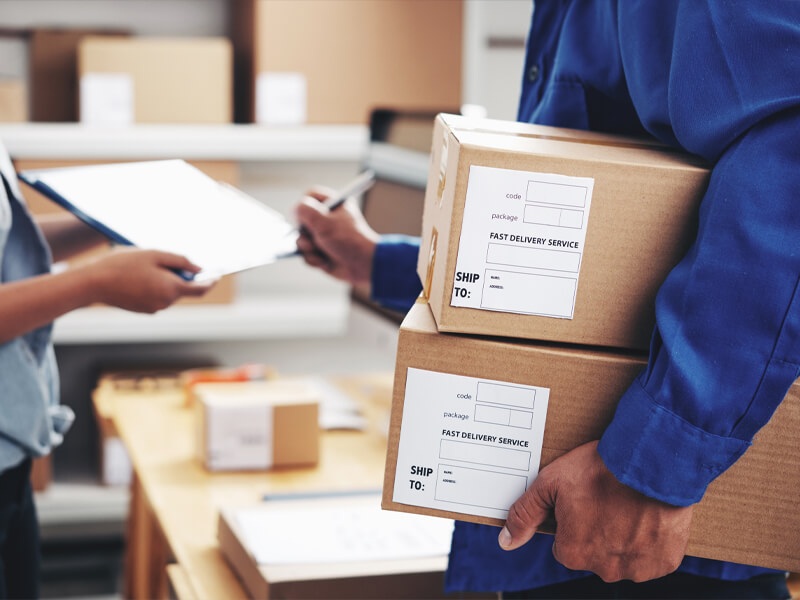Eco-Friendly Practices: Driving Adjustment with Bulk Container Recycling
Eco-Friendly Practices: Driving Adjustment with Bulk Container Recycling
Blog Article
Effective Industrial Recycling Solutions for Lasting Product Packaging: A Comprehensive Guide
In today's progressively environmentally-conscious world, the demand for sustainable product packaging remedies has never been higher. To fulfill this need, organizations throughout sectors are proactively seeking efficient commercial recycling remedies. However, navigating the facility landscape of lasting product packaging can be challenging without a thorough guide. That's where this thorough guide on reliable commercial recycling remedies for sustainable packaging can be found in. By checking out essential locations such as product packaging product choice, developing for recyclability, implementing reusing facilities, teaming up with reusing partners, and tracking and measuring reusing success, this overview will outfit you with the understanding and tools needed to make enlightened decisions and drive positive modification within your organization. Whether you're a packaging professional, sustainability manager, or just curious about the subject, this overview will provide beneficial understandings and approaches to assist you navigate the globe of sustainable packaging.
Packaging Product Choice
The option of packaging materials plays a vital duty in ensuring the sustainability of commercial recycling remedies. The choice of products is key in decreasing ecological impact and taking full advantage of reusing efficiency when it comes to sustainable packaging. Choosing the best products can assist reduce waste generation, preserve resources, and promote a circular economy.
Materials like cardboard, paper, glass, and particular types of plastics can be reused several times without losing their quality. On the other hand, materials that are difficult to recycle, such as blended plastics or non-recyclable compounds, can create obstacles for the recycling procedure and may end up in burners or land fills.
Another factor to consider is the usage of sustainable and eco-friendly materials. Product packaging made from renewable energies, such as plant-based plastics or biopolymers, can assist reduce dependence on fossil gas and minimize climate adjustment. Furthermore, naturally degradable materials damage down normally over time, lowering the build-up of waste in garbage dumps.
Furthermore, the weight and quantity of packaging products should be minimized to minimize transport expenses and power consumption. Lightweight materials not only call for fewer resources during production yet likewise add to reduce carbon discharges during transportation.
Creating for Recyclability
Packaging developers should prioritize the use of materials that are extensively approved for reusing and have actually developed reusing infrastructures. Products such as glass, aluminum, and specific types of plastic, like Animal and HDPE, are generally reused and must be chosen over products that are hard or pricey to recycle.
An additional critical factor to consider in designing for recyclability is the removal of unnecessary elements or materials. By minimizing the variety of layers, finishings, and additional elements, product packaging can be made less complex and less complicated to reuse. Additionally, developers should aim to decrease making use of combined materials, as they can complicate the reusing process.

Implementing Recycling Framework
Reliable application of reusing infrastructure is important for the success of commercial recycling services. Without correct infrastructure in position, the recycling process comes to be ineffective and inefficient, impeding the total goal of sustainable packaging.
To carry out recycling facilities successfully, a number of essential variables require to be thought about. To start with, there should be a well-organized collection system that facilitates the separation and collection of recyclable products. This can include assigned reusing containers in public spaces, as well as partnerships with waste administration business for read the article curbside pick-up and sorting.
Once gathered, the recyclable products require to be transported to recycling facilities in a prompt fashion. This calls for efficient logistics and transportation networks, ensuring that the materials reach the suitable facilities right away.
At the recycling facilities, advanced sorting and processing technologies ought to be in place to separate different sorts of materials effectively. This includes making use of automated arranging equipments, optical scanners, and hand-operated sorting strategies.
Furthermore, there must be a durable market demand for recycled materials. This can be achieved via partnerships with suppliers and sectors that utilize recycled materials in their production procedures. Developing a stable market for recycled products incentivizes the recycling industry and advertises the circular economy.
Collaborating With Recycling Allies

One trick facet of teaming up with recycling companions is the establishment of clear interaction networks. It is very important to develop open lines of interaction to help with the exchange of details, updates, and comments. This allows both events to stay educated regarding the progress of reusing initiatives and resolve any obstacles or issues that may emerge.
Furthermore, collaboration can involve joint initiatives in implementing and making recycling programs. Reusing partners can supply useful understandings and guidance in establishing efficient collection systems and establishing the most appropriate recycling modern technologies. By working with each other, businesses and reusing companions can optimize the recycling process and decrease waste.
Furthermore, cooperation can expand past the operational aspects of reusing. It can additionally encompass campaigning for and education initiatives. By joining pressures, organizations and recycling companions can elevate awareness concerning the importance of recycling and advertise the adoption of lasting product packaging techniques amongst consumers and other stakeholders.
Tracking and Measuring Recycling Success
To make sure the effectiveness of commercial reusing solutions and the success of sustainable packaging goals, it is crucial for organizations and their reusing partners to establish a comprehensive system for monitoring and measuring recycling success (industrial metal packaging). Measuring and tracking reusing success allows services to evaluate the impact of their recycling initiatives, recognize Get the facts areas for enhancement, and established purposeful targets for future development
One way to track recycling success is with making use of data collection and analysis devices. By gathering data on the amount of packaging waste generated, the percentage of waste that is reused, and the sorts of products being reused, services can acquire beneficial insights right into their recycling efficiency. This information can then be assessed to determine fads, patterns, and areas of inefficiency.
An additional crucial aspect of monitoring and determining reusing success is developing clear and standard metrics. This enables organizations to contrast their efficiency against sector criteria and track their progression over time. Metrics such as reusing prices, waste diversion prices, and greenhouse gas discharges can offer a measurable procedure of a business's reusing success.

Final Thought
In verdict, carrying out effective commercial recycling solutions for sustainable packaging needs mindful factor to consider of product packaging material choice, making for recyclability, executing recycling framework, working together with reusing partners, and monitoring and determining recycling success. By incorporating these techniques, companies can add to an extra environmentally-friendly and lasting technique to packaging, reducing waste and promoting the round economic climate.
By discovering key locations such as packaging material option, designing for recyclability, carrying out reusing infrastructure, teaming up with recycling companions, and monitoring and determining recycling success, this overview will certainly furnish you with the understanding and tools required to make enlightened decisions and drive favorable change within your organization. Product packaging designers must focus on the use of materials that are widely accepted for reusing and have developed reusing facilities.Collaboration with recycling companions is crucial for the effective application of commercial recycling remedies and the success of lasting packaging goals. By signing up with forces, services and reusing companions can elevate understanding regarding the relevance of recycling and advertise the fostering of sustainable packaging techniques among customers and various other stakeholders.
By gathering data on the quantity of product packaging waste created, weblink the percent of waste that is recycled, and the types of materials being recycled, organizations can gain important understandings into their recycling efficiency.
Report this page